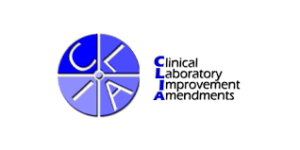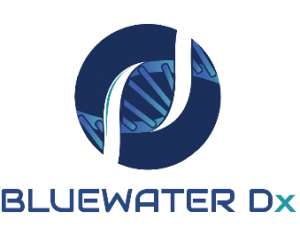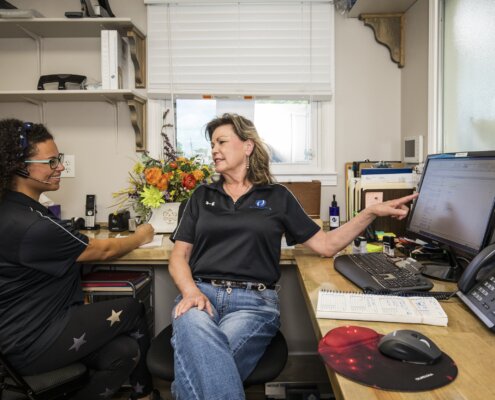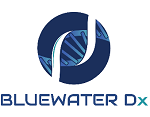General
How do I order supplies?
Bluewater offers convenient online order entry by emailing .
What is the proper way to fill out a Bluewater requisition form?
Requisition forms, whether handwritten or submitted electronically, must include at least 2 unique patient identifiers, insurance or billing information, diagnosis code(s), medically necessary test orders, clinical information pertinent to perform the testing and the ordering provider’s signature.
Electronic requisitions are submitted through our online physician’s portal. Paper requisition forms and completion instructions are also available in the physician’s portal. If you have additional questions, please contact Bluewater customer service at ext. 210 or by email at .
How do I make changes to a requisition that has already been submitted?
Changes can be requested simply by faxing a completed Laboratory Request Form (Add-On form) to our Client Services at .
Request changes:
- Add Tests
- Re-Run a Reported Sample
- Corrections
- Patient demographics
- Insurance
- Diagnosis code
- Collection date
Please click to Download Laboratory Request Form
When will test results be reported?
Generally, Bluewater reports results within the following turn-around-times after specimen receipt in the laboratory. However, several issues can cause a delay in reporting:
- Incomplete requisition
- Improper Collection/Specimen Type
- Improper specimen labeling
- Delay in delivery to the laboratory
- Specimen stability exceeded
- Re-testing required
| Testing Type |
Typical Turn-Around-Time (Business Days) |
| Urine Toxicology | 48 hours |
| Methamphetamine Isomer | 3 – 4 days |
| Oral Fluid Toxicology | 24 – 96 hours |
| Free-Testosterone (LC/MS/MS) | 24 – 48 hours |
| Chemistry | 24 – 48 hours |
| Molecular | 24 – 48 hours |
| COVID-19 | 24 – 48 hours |
| Send-Outs | 2 – 7 days |
COVID-19
What does it cost to be tested for COVID-19?
Patients are not responsible for any out-of-pocket costs. Bluewater will send a claim to the patient’s insurance provider or to Federal programs for uninsured patients.
How do I get tested for COVID-19?
Any individual wishing to be tested is eligible. Choose one of Bluewater’s convenient mobile collection sites published on the Home page for a drive-up collection near you.
Why should I get tested?
Individuals presenting with symptoms or who may have been exposed to the virus should get tested to confirm infection. Patients with a positive result should self-isolate until cleared by your healthcare provider to help prevent further spread of the virus.
Other activities such as traveling or returning to work or school, may require a COVID-19 test as well. Make sure to review the requirements and plan your COVID test accordingly.
How is COVID collection performed at Bluewater?
Bluewater performs nasopharyngeal swabs at our mobile collection sites. To ensure accurate testing results, all swabs will be collected by Bluewater staff trained on proper technique and swab depth. We cannot allow patients to collect their own swabs. Click to learn more about nasopharyngeal swab collection.
What is a Diagnosis Code?
A diagnosis code is an alpha-numeric code used in place of a written description of disease, illness and injury. COVID-specific diagnosis codes can be found at:
.
How soon will my COVID-19 result be ready?
You can expect your result to be published in online patient portal within 48-72 business hours (M-F) from the time of your sample collection.
Why have I not gotten my result when others collected at the same time as me have gotten theirs?
Specimens from each collection site are delivered to the laboratory overnight. All specimens are then received into the laboratory system for processing. Testing is performed in batches of 94 specimens, so your specimen testing can sometimes be delayed up to 24 hours after those collected with you.
All results should still be reported within at least 72 hours of collection. If you have still not received your results, please Contact Us .
How do I access my test results?
All patients tested for COVID-19 at Bluewater will receive results via text message or through an online patient portal at . If enrolled in the portal, you will receive an email from Sphere Analytics with a link and password to login.
What if my result is negative?
A negative COVID-19 result does not necessarily mean that you are not infected with the virus. As with all laboratory testing, the instrument can only identify viral material down to the limit of detection. Although our limit of detection is quite low, it is possible for an infected individual to test negative during the early stages of infection. For this reason, all individuals should continue observing all preventative precautions set by the CDC and local governments, to keep yourself and your loved ones safe and healthy.
If you develop new symptoms or believe you have had a new exposure, Bluewater is available to retest individuals as often as necessary at one of our mobile collection sites. If you wish to seek further medical care, you may contact your healthcare provider or one of our clinical partners listed on the homepage.
What if my result says “inconclusive”?
This COVID testing is looking for 3 genes (RNA sequences) specific to the COVID-19 virus. An inconclusive result means that only 1 of those 3 genes was detected and the test doesn’t meet the criteria to call your result either negative or positive. This can occur for multiple reasons, including collection at either the very early stages or the very late stages of an infection.
It is often suggested you get retested after a day or two when the viral load may be higher. In the meantime, you should quarantine away from others.
What if my result is positive?
If your sample tests positive for COVID-19, you will receive a phone call from one of our healthcare partners within 48 business hours with instructions for follow-up care.
A positive COVID-19 result means that you have an active viral infection and are considered to be contagious. Individuals testing positive should self-isolate until cleared by a healthcare provider or your local health department and seek medical care if desired. Call 911 and seek immediate medical attention if severe symptoms manifest.
Your local health department will likely be in contact with you to track your symptoms, perform contact tracing, and provide quarantine guidance. If you have not been contacted within 72 hours, you may choose to reach out to their offices directly.
How long do I need to quarantine after a positive COVID result?
Bluewater is not authorized to release individuals from quarantine. However, your local health department or a licensed medical provider may be able to provide a documented release.
Employers or administrators may have additional requirements for returning to work or school. Many states, countries, and airlines also have strict requirements. Please adhere to all applicable policies and regulations.
What is the difference between a molecular test and an antibody blood test?
The molecular testing process identifies viral material within the patient sample and indicates an active infection which may require treatment. An antibody test is performed on blood and indicates if the patient has had previous exposure to the virus causing the body to develop antibodies against the infection. Results from antibody testing will be important as researchers determine how the virus has spread.
Is it okay that my collection only swabbed from one nostril?
Yes. Bluewater’s collection practices adhere to recommendations from our Emergency Use Authorization (EUA) issued by the FDA. Guidance from the CDC also does not require collections from both nostrils, nor does it specify a certain number of seconds for the swab to be inserted, as long as the minitip is saturated with fluid.
Toxicology
What is Methamphetamine Isomer testing?
Methamphetamine isomer testing helps determine if a positive methamphetamine confirmation is illicit. Methamphetamine is produced as two isomers. The D isomer (dextro- or D-methamphetamine) is a powerful central nervous system stimulant and commonly abused street drug known as “meth” or “speed”. D-methamphetamine is also the primary active component of Desoxyn, a medication sometimes used to treat ADHD and obesity. The L isomer (levo- or L-methamphetamine) is not a central nervous system stimulant and is not controlled by the DEA. Vicks Vaporub is a common example of a medication containing L-methamphetamine. Federal drug testing policies state that urine containing more than 20% D-methamphetamine is consistent with exposure to the DEA controlled version of the drug and is likely due to illicit use if the patient is not prescribed a D-methamphetamine containing drug such as Desoxyn.
What are drug metabolites and why is detection of metabolites useful?
Most drugs are processed by the body to produce “metabolites”, which can be active or inactive compounds, that were not present in the parent drug prior to administration. We include relevant metabolites of common drugs in our panels for two reasons:
- If a parent drug is metabolized quickly and the urine sample is collected far after the most recent dose, the parent drug may have been fully metabolized and thus may not be present in the sample. Testing for metabolites allows us to confirm the patient is taking a drug even when the drug in question is not detected.
- Patient samples can be adultered to test positive for a drug which is not being taken as prescribed. One method for this is through the addition of pill scrapings into a urine sample so the sample will test positive for the parent drug, in an attempt to mimic a positive test. When metabolites are tested alongside the parent drug, it can readily be ascertained when a sample has been adultered through the presence of high concentrations of parent drug with no or very low levels of metabolites.
Note: substantial variability exists in metabolic rates and renal clearance between individuals, and even medication changes may influence the ratio of metabolites to parent drug. In some cases this may even cause certain metabolites to be absent from the sample. Hydrocodone, for example, is metabolized into hydromorphone, norhydrocodone, and dihydrocodeine. If a patient is prescribed fluoxetine (Prozac), the amount of hydromorphone produced following hydrocodone administration will be reduced dramatically, sometimes below the level of detection. This patient would still have parent drug (hydrocodone) as well as the other metabolites (norhydrocodone and dihydrocodeine). Please contact our technical support staff for a more detailed explanation of a specific sample or for a more general review of how to consider metabolite concentrations alongside parent drug concentrations.
Can interference occur between two unrelated compounds?
In a complex biological specimen, analytical interference may occur in which high levels of one compound may influence the ability of the method to identify another compound. A relevant example from our panel is the influence of gabapentin on amphetamine measurement. Patients receiving gabapentin can produce urine concentrations so high that they completely mask the ability to measure amphetamine in the sample. Further, methamphetamine is metabolized by the liver into amphetamine, therefore all samples positive for methamphetamine should have amphetamine present as well. High levels of urine gabapentin may mask urine amphetamine, resulting in a sample reported positive for methamphetamine but negative for its metabolite, amphetamine. Please contact our technical support staff with any questions regarding amphetamine measurements in patients receiving high-dose gabapentin.
What are the benefits of using urine for drug monitoring?
Several sample types exist for serial drug monitoring, including blood, urine, oral fluid and hair testing. Urine is the preferred sample in many cases because it offers a non-invasive collection method, is usually a plentiful sample type, and collection of urine poses minimal risk to the patient and staff. Urine drug analysis detects presence of a compound longer than analysis in blood and at lower concentrations than hair analysis. Time from sample collection to results is equivalent to blood analysis and significantly shorter than hair analysis. Urine as a sample type, however, is not without drawbacks. Urine measurement will not detect drug after ingestion or injection as rapidly as blood analysis, nor will it detect historical drug use as long after cessation as hair analysis. Finally, urine drug analysis is not subject to the same drastic shifts in concentration between doses as exhibited by blood sampling, but it is therefore not as useful at therapeutic drug monitoring as blood analysis. All considered, due to the ease of collection and good rates of positivity after cessation of a drug, urine is the preferred specimen type for drug screening and confirmation.
Collecting a urine specimen may sometimes pose undesirable complications for patients who are unable to urinate at the time of the appointment or are suspected of tampering with the specimen. In these cases, Bluewater offers drug monitoring on oral fluid, a specimen type readily available and the collection of which can easily be observed.
What is creatinine normalization and why is it useful?
Creatinine is a byproduct of muscle metabolism and is excreted at a relatively constant rate from the kidneys. While the volume of urine produced in a given period of time can change dramatically with over- or under-hydration, resulting in more or less concentrated urine, the amount of creatinine excreted per hour is a factor of blood flow through the kidneys and thus remains relatively constant for a given patient. Due to its relative stability, creatinine is an excellent analyte to use for normalization of all analyte concentrations within a sample, which affords providers some level of comparison between samples. Creatinine is normalized to a “standard” concentration of 100 mg/dL, so that historical values reported for a given patient can be compared relative to each other, regardless of the patient’s level of hydration at the time of each sample collection. For example, if one sample had a creatinine value of 50 mg/dL, all analyte concentrations for the sample would be doubled to achieve a “normalized” value equivalent to 100 mg/dL creatinine. Likewise, if a creatinine value was 200 mg/dL, all the analyte concentrations would be halved to achieve a “normalized” value equivalent to 100 mg/dL creatinine. Further, creatinine also affords an additional element to evaluate sample integrity, as extremely low creatinine concentrations not within physiological levels can be a sign of sample adulteration.
Why might toxicology specimens be rejected for testing?
-
Quantity not sufficient for testing
The preferred sample volume is 10mL, however analysis can be completed with as little as 2mL. Any specimen received with less than 2mL total volume will be rejected and marked QNS for “Quantity not Sufficient”. -
Specimen improperly labeled/identified
All specimens received for analysis must be labeled with at least 2 patient identifiers consisting of the following: (1) name, (2) date of birth, (3) social security number/medical record number/patient identification number, and (4) requisition number (or other special identification number). -
Specimen leaked in transit
If a leaked specimen is delivered to the laboratory with insufficient volume for testing, or if a leak has caused possible cross-contamination, the specimen(s) will be rejected as “Specimen Leaked in Transit”. -
Specimen found to be adulterated
Sample integrity analysis measures specific gravity, creatinine, nitrite, pH, and oxidants. In addition, ratios of parent drug concentrations to metabolites may suggest adulteration of a sample even if other markers are within physiological limits. These situations are considered on a case-by-case basis. -
Specimen exceeds stability requirements
Analytical parameters of our method are only verified for samples collected and stored as directed. This includes storage for up to 14 days at room temperature, 30 days refrigerated and 60 days frozen. Any specimen exceeding these storage limits will be rejected.
What is the difference between urine drug screens and urine drug confirmations?
At Bluewater, we perform both urine screening and confirmation tests for prescribed medications and illicit drugs. Screening tests utilize immunoassays to rapidly detect drug classes, but in most cases cannot differentiate between specific drugs of a class or the metabolites produced by the body when those drugs are consumed. Screening tests typically have lower sensitivity than confirmatory testing. Confirmation analysis utilizes liquid chromatography mass spectrometry to individually identify and quantify all relevant compounds in the sample from our list of 59 parent drugs and metabolites. Confirmation analysis is more time consuming than screening, but it is considered the gold standard for analysis of compounds in urine.
Our Mission
Our mission is to provide high-level solutions to physicians, medical staff and their patients with exceptional customer service, clinical and technical support and the commitment to positive patient outcomes. By striving to exceed customer expectations, we are committed to deepening our relationships with current customers and growing our client base.
Our Values
All Bluewater interactions demonstrate integrity and professionalism. We are dedicated to creating an environment that promotes learning and growth, recognizing that the quality, motivation and performance of our employees are key factors in achieving our success. We believe in the importance of participating in industry initiatives and value the insight of our colleagues across the healthcare field.
Our Commitment
Bluewater Diagnostic Laboratory’s commitment as an industry leader is evident through our cutting-edge instrumentation and testing methodologies.
Corporate Office
Mount Washington, KY 40047
Office
Fax
For General Inquiries email us @
Follow us
Quick Links
Certifications



